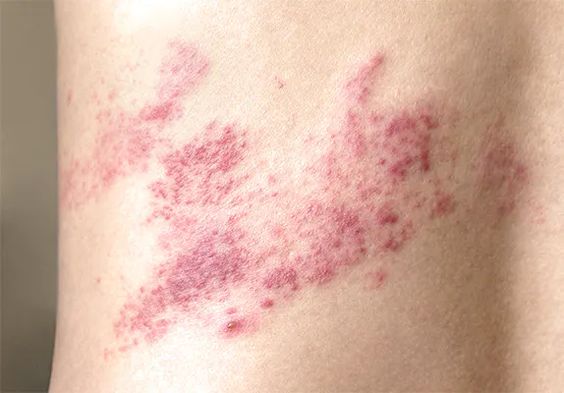Shingles, medically referred to as Herpes Zoster, is a debilitating skin condition brought about by the reactivation of the varicella-zoster virus, the same culprit behind chickenpox. Unlike chickenpox, shingles is not a childhood disease. It typically surfaces in adulthood, often among individuals with weakened immunity. Characterized by a painful rash and discomforting symptoms, shingles is more than just a skin problem; it's a condition that can significantly compromise one's quality of life.
To arm you with the right knowledge and tools to understand, prevent, and manage shingles, this guide will delve into an overview of the condition, identify its symptoms, discuss diagnostic methods, explore treatment options, and highlight crucial prevention measures.
Understanding Shingles (Herpes Zoster)
Herpes Zoster, more commonly known as shingles, is an infection caused by the varicella-zoster virus. This is the same virus that causes chickenpox. When an individual recovers from chickenpox, the virus retreats into the nervous system's nerve cells, where it remains inactive. Sometimes, due to reasons not fully understood but often associated with a weakened immune system or stress, the virus reactivates, causing shingles.
While shingles usually manifests as a painful rash that develops on one side of the body, it's important to remember that it is not merely a skin condition. It's a systemic viral infection that can leave lasting impacts on an individual's health, such as postherpetic neuralgia (chronic pain that persists after the rash subsides) and vision impairment.
Recognizing the Symptoms of Shingles
The most distinct symptom of shingles is a painful, blistering rash that typically appears on one side of the body or face. But before the rash manifests, individuals may experience other symptoms. These pre-rash symptoms can include a burning or tingling sensation on the skin, sensitivity to touch, fever, headaches, and generally feeling unwell. These early symptoms usually develop several days before the characteristic rash becomes visible.
The rash begins as a cluster of reddish pimples. These soon evolve into small fluid-filled blisters that look similar to chickenpox. After about a week, the blisters dry out and form a crust, marking the healing stage of the rash.
Diagnostic Methods for Shingles
Diagnosing shingles primarily involves physical examination. Healthcare professionals can often diagnose shingles by looking at the distinctive rash and discussing symptoms with the patient. In certain instances, if the rash is not present or if it's necessary to differentiate shingles from other skin conditions, a laboratory test may be conducted. The test involves taking a sample from the rash and analyzing it for the presence of the varicella-zoster virus.
Treatment Options for Shingles
Prompt treatment is important to manage symptoms, hasten recovery, and reduce the risk of complications. Antiviral medications are usually the first line of treatment for shingles. These drugs help to reduce the severity and duration of symptoms. They are most effective when started within 72 hours of the appearance of the rash.
In addition to antiviral medications, pain relief is an important aspect of managing shingles. Over-the-counter pain medications, prescription drugs, or even topical numbing agents may be used depending on the severity of pain and discomfort, healthcare professionals may also prescribe additional medication to help manage these symptoms. These can include steroids to lessen inflammation and certain medications designed to mitigate the nerve pain often associated with shingles.
Some individuals may also find relief through home remedies and lifestyle changes. Applying cold compresses to the rash, taking a cool bath, or wearing loose clothing can help reduce itching and discomfort. Adequate rest and nutrition can support the body's healing process and boost the immune system, reducing the virus's activity.
Preventing Shingles
Given the potential severity of shingles and its possible complications, prevention is crucial. The most effective way to prevent shingles is through vaccination. The Shingrix vaccine is recommended for individuals over 50, regardless of whether they remember having had chickenpox. This vaccine has proven effective at not only preventing shingles but also reducing the incidence of postherpetic neuralgia in those who do contract shingles.
In addition to vaccination, maintaining a strong immune system through a healthy lifestyle can also play a role in prevention. Regular exercise, a balanced diet, sufficient sleep, and stress management can all help keep your immune system robust and reduce the likelihood of the varicella-zoster virus reactivating.
Understanding shingles is the first step in combating this viral infection. By recognizing its symptoms, seeking prompt medical attention, and following an appropriate treatment plan, individuals can significantly mitigate the effects of shingles and enhance their recovery. Embracing prevention strategies, such as vaccination and a healthy lifestyle, will further protect against the virus.
Remember, shingles is more than a skin condition. Its impact can be systemic and significantly impair an individual's quality of life. It's important to consult a healthcare professional if you suspect you or a loved one may have shingles or if you wish to take steps to prevent this debilitating condition. As always, being informed and proactive about your health can make all the difference.









